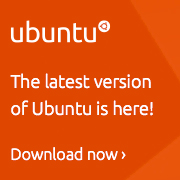asklab @ bmid (weekly status report)
-
-
STOLEN principle – 6 basic features each identified by the letters STOLEN, which if considered could increase the wikis chances of being successful
-
Specific Overall Objective – Magnet, FAQ
Timely – Set Window of Discussion, Lunch Menu
Ownership – MySpace, BarnRaising, PageOwnership
Localised objective – StartingPoint, EmptyPages, Scaffold
Engagement rules – Invitation, Welcoming
Navigation – Automatic Index, Seed it with content, Too much structure
-
-
Bulldoze Your Cubicles for Better Collaboration – Sylvia Ann Hewlett – Harvard Business Review
-
impersonal “cube farms” discourage collaboration, stifle employee engagement and, as a result, strangle innovation at the exact time when it’s desperately needed
-
-
Enterprise 2.0 Startups – Know Your Market
Agree – if one wants to change the Enterprise situation one better understands this very special context.
-
companies may like the status quo
-
Enterprise 2.0 startups have to be wary about overselling innovation and change, while at the same time not sacrificing the value they bring.
-
I’m often surprised what small development teams think an enterprise user base wants.
-
The struggle between innovation and status quo will be with us for quite some time. You can’t change the way companies work in a few days, it takes a long time. On top of which, companies will often want to just dip a toe vs. go whole hog into something.
-
enterprise social software needs this kind of event and exposure to allow companies to get-together and figure out what’s going on, what’s working, etc.
-
-
The Quality vs Quantity Online Relationships Conundrum | Collaboration 2.0 | ZDNet.com
-
The quality vs quantity conundrum is also very real in the depth of knowledge shared. The goal of good collaboration networks over time are to build up ever more valuable repositories of information. The contributors may evolve and change over time, just as the personal connections and relationships that grow from sharing the information may mutate and change, but the body of knowledge and interconnected ‘business fabric’ grows cumulatively ever stronger.
-
The right information – and the right contacts – when you need them will absolutely make the average knowledge worker so much more productive. The challenge is differentiating their use models to filter overwhelming volume and understand quality over quantity, something which may be spinning out of control online in their personal lives online.
-
-
At higher risk of having good ideas
Patti Anklam collects some good links (to online “paper” media) and ponders the changing nature of creativity, stimulus and innovation in social networks. Patterns and tasks aren’t new (homogenity rarely breeds new ideas, being broad loosens the focus) as are the potential structural solutions (connecting disparate networks with knowledge brokers, importing, promoting and adapting ideas, the need for boundary-spanning importing of ideas …) – but like Paula comments it’s a sort of canary to see if we’re doing our internal social networking (or our hanging out on the social media scene) right.
-
If you have a “closed” network, where everyone pretty much knows or knows about each other. A good aspect of this connectivity is that the network can serve as a filter — multiple tweets or retweets about a topic link usually means it’s worth following — and its possible to generate a common language. However, it’s not likely that the richest source of creativity — two unlikely ideas coming together — will occur. You need (or the organization needs) to have connections outside the group. As Burt puts it (using one of my favorite phrases ever, the title of this blog), “People who live in the intersection of social worlds ‘are at higher risk of having good ideas.”
-
-
8 Things You Can Do With an Enterprise Wiki – Digital Landfill
Stewart Mader has a short list of wiki usage ideas:
“Let’s look at eight ways a wiki can help you readjust your valuable time to get more of your essential work done, spend less time on meetings and redundant activities, and more efficiently assemble, refine and reuse valuable information.
* 1. Meeting Agendas
* 2. Meeting Minutes, and Action Items
* 3. Project Management
* 4. Gather Input
* 5. Build Documentation
* 6. Assemble and Reuse Information
* 7. Employee Handbook
* 8. Knowledge Base” -
8 Things You Can Do With an Enterprise Wiki – Digital Landfill – Annotations | Diigo
-
Let’s look at eight ways a wiki can help you readjust your valuable time to get more of your essential work done, spend less time on meetings and redundant activities, and more efficiently assemble, refine and reuse valuable information.
-
1. Meeting Agendas
-
2. Meeting Minutes, and Action Items
-
3. Project Management
-
4. Gather Input
-
5. Build Documentation
-
6. Assemble and Reuse Information
-
7. Employee Handbook
-
8. Knowledge Base
-




